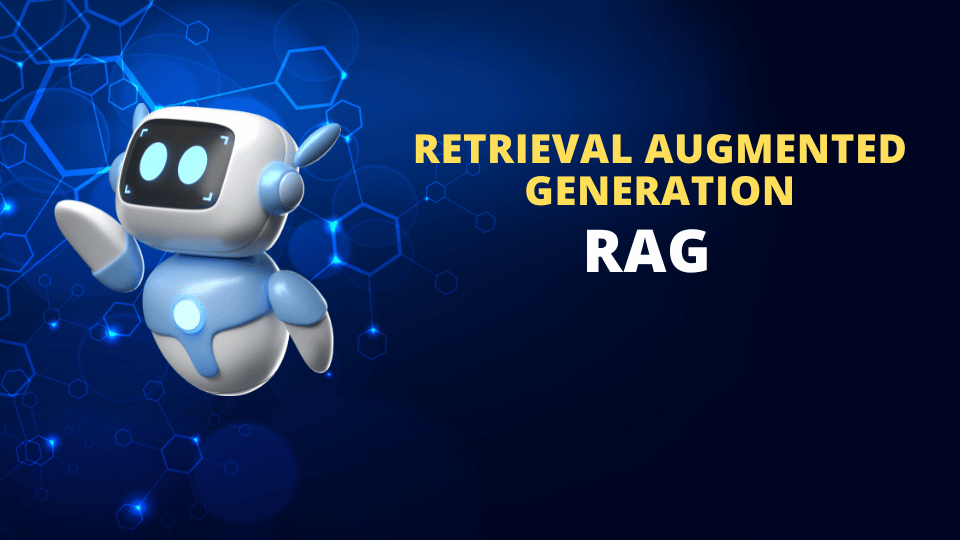Subtotal ₨ 0
Introduction
Retrieval-Augmented Generation, commonly referred to as RAG, is an advanced technique that enhances the performance of large language models (LLMs) by incorporating external knowledge retrieval. Traditional LLMs like GPT, BERT, or T5 are trained on massive datasets, yet they operate with a static memory. This means their knowledge is limited to the data they were trained on, and they cannot access new or updated information after training. RAG addresses this limitation by integrating a retrieval mechanism that allows models to fetch relevant documents or facts from external sources during inference, thereby generating more accurate, contextually grounded, and up-to-date responses.
How Does Retrieval-Augmented Generation Work?
The RAG architecture operates through a two-step process: retrieval followed by generation. First, when a user submits a query, the system uses a retriever to search a large corpus or document store for relevant content. These documents are identified based on their semantic similarity to the query using vector embeddings and similarity search tools like FAISS or Pinecone. Once the top-matching documents are retrieved, they are passed to a language model (the generator), which uses them along with the original query to produce a final response. This process ensures that the generated content is both coherent and informed by accurate, real-world data.
The Role of the Retriever and Generator in RAG Models
The retriever is a critical component in RAG systems. It is responsible for efficiently finding the most relevant chunks of information from potentially millions of documents. Dense retrievers, which rely on vector representations, are particularly effective in modern RAG implementations. The generator, typically a pre-trained transformer-based language model, synthesizes a natural language answer using the retrieved documents as context. This separation of responsibilities allows RAG systems to remain flexible and scalable, as the knowledge base can be updated without retraining the generator model.
Types of RAG Architectures: RAG-Token vs RAG-Sequence
There are two primary variants of RAG: RAG-Token and RAG-Sequence. In RAG-Token, the model considers all retrieved documents simultaneously at each step of the response generation. This allows the generator to dynamically attend to the most relevant information on a per-token basis, often resulting in higher accuracy. RAG-Sequence, on the other hand, treats each retrieved document independently and generates separate responses for each one. The system then selects or ranks the final output based on confidence or scoring metrics. While RAG-Token tends to deliver better overall performance, it also demands more computational resources.
Benefits of Retrieval-Augmented Generation for Real-World Applications
RAG is especially valuable in scenarios where factual accuracy and dynamic knowledge access are crucial. In healthcare, RAG systems can provide doctors or patients with information drawn from the latest research and clinical guidelines. Legal professionals can use RAG-powered tools to retrieve precedents and generate summaries based on case law. Enterprises benefit from AI assistants that pull answers from internal documentation and training manuals, improving productivity and reducing manual search time. By combining retrieval and generation, RAG brings the best of both worlds—contextual fluency and factual correctness.
Challenges and Limitations of the RAG Approach
Despite its advantages, RAG is not without challenges. The effectiveness of the system heavily depends on the quality of the retrieved content. If irrelevant or outdated documents are returned, the generator may produce misleading answers. Additionally, latency can become an issue, especially when the retrieval step involves querying large datasets or remote databases. Another limitation is the token input size of language models—if too much content is retrieved, it must be truncated or summarized, which could affect the accuracy of the final output. Ensuring document quality, implementing caching strategies, and fine-tuning retrieval algorithms are critical to overcoming these hurdles.
Top Tools and Frameworks for Building RAG Pipelines
Several open-source and commercial tools make it easier to build and deploy RAG systems. Hugging Face’s Transformers library offers plug-and-play support for pre-trained RAG models, along with tools like DPR (Dense Passage Retrieval) for efficient vector-based search. LangChain is a popular orchestration framework that simplifies the integration of language models with retrieval systems, APIs, and workflows. Haystack, developed by deepset, provides a modular pipeline for question answering and document search. Vector databases such as Pinecone, Weaviate, and FAISS enable high-speed similarity search, making them essential for scalable RAG implementations.
Future Trends in Retrieval-Augmented Generation
The RAG ecosystem is rapidly evolving. One promising direction is streaming RAG, where models interact with continuously updated knowledge bases, enabling real-time information access. Multimodal RAG is another frontier, where systems incorporate not only text but also images, videos, or audio into their retrieval and generation process. Researchers are also exploring personalized RAG systems that adapt their retrieval strategy based on user history, preferences, or domain-specific needs. As these advancements mature, RAG will become a core component of intelligent systems across education, research, enterprise, and customer service.
Conclusion:
Retrieval-Augmented Generation represents a significant advancement in natural language processing and generative AI. By integrating retrieval mechanisms into the generation pipeline, RAG addresses one of the biggest shortcomings of traditional language models: the lack of real-time, grounded knowledge. Whether in customer support, legal research, healthcare, or enterprise productivity, RAG provides a scalable, flexible, and more accurate alternative to standalone generative models. As tools improve and architectures evolve, RAG is poised to become a foundational technology in the next wave of AI applications.

